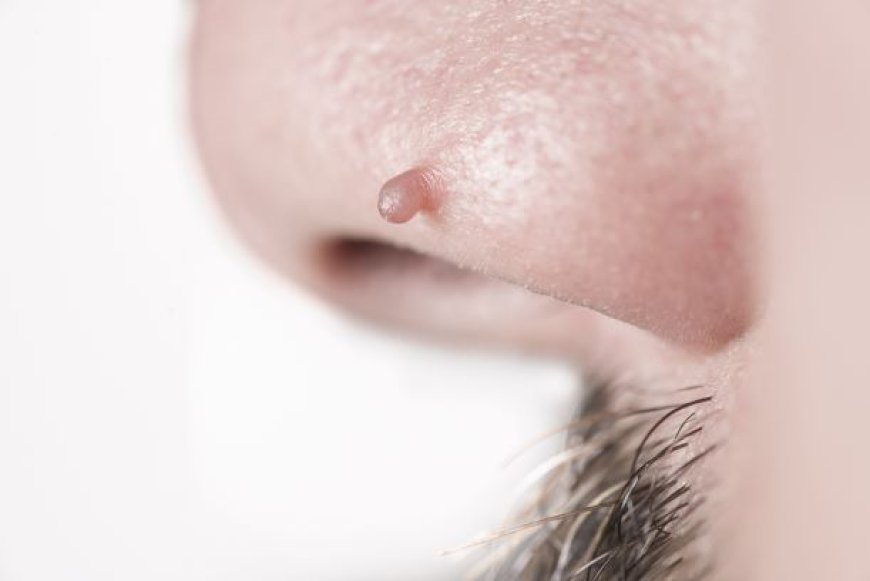Discover the Latest Innovations in Skin Tag Removal Treatment

Skin tags are small, benign growths that commonly appear on the skin, often in areas where skin rubs against skin or clothing. While these growths are generally harmless, they can be bothersome or unsightly for some individuals. Fortunately, advancements in skin tag removal treatment(علاج إزالة علامات الجلد)have made it easier than ever to address these growths effectively. In this comprehensive guide, we'll explore the latest innovations in skin tag removal treatment, helping you make informed decisions about your options.
Understanding Skin Tags
What Are Skin Tags?
Skin tags are soft, flesh-colored growths that hang off the skin. They are typically found in areas such as the neck, underarms, groin, and eyelids. Skin tags are composed of collagen fibers and blood vessels and are usually harmless, though they can become irritated or inflamed if they are frequently rubbed or scratched.
Causes and Risk Factors
The exact cause of skin tags is not fully understood, but several factors can increase the likelihood of developing them. These include:
- Genetics: A family history of skin tags may predispose individuals to develop them.
- Friction: Areas where skin rubs against skin or clothing are more prone to skin tags.
- Obesity: Excess body weight can lead to increased skin friction and the development of skin tags.
- Hormonal Changes: Skin tags are more common during pregnancy or other times of hormonal change.
Traditional Methods of Skin Tag Removal
Over-the-Counter Treatments
For small and less problematic skin tags, over-the-counter treatments can be effective. These treatments often include:
- Freezing Kits: Similar to cryotherapy used by healthcare professionals, these kits freeze the skin tag, causing it to fall off over time.
- Tag Removal Creams: These creams are designed to dry out the skin tag, leading to its eventual removal.
At-Home Remedies
Some people opt for natural remedies to remove skin tags. While these methods are popular, their effectiveness can vary:
- Tea Tree Oil: Applied directly to the skin tag, tea tree oil is thought to dry out the growth.
- Apple Cider Vinegar: This acidic solution may help in removing skin tags by breaking down the tissue.
Latest Innovations in Skin Tag Removal Treatment
Advanced Cryotherapy Techniques
Cryotherapy, or freezing therapy, has evolved significantly. Modern cryotherapy devices offer precise control over the freezing process, improving the effectiveness of treatment while minimizing discomfort. The latest devices can target skin tags with greater accuracy, reducing the risk of damage to surrounding skin.
Radiofrequency Ablation
Radiofrequency ablation (RFA) is a cutting-edge technique that uses high-frequency electrical currents to remove skin tags. The procedure involves applying radiofrequency energy to the skin tag, which heats and destroys the tissue. RFA is known for its precision and minimal risk of scarring.
Laser Removal
Laser removal is another advanced method for treating skin tags. This technique uses focused laser light to vaporize the skin tag. Laser removal offers several benefits:
- Precision: Lasers can target the skin tag without affecting the surrounding tissue.
- Reduced Pain: The procedure is generally well-tolerated, with minimal discomfort reported by patients.
- Quick Recovery: Most individuals experience a rapid healing process after the procedure.
Electrosurgery
Electrosurgery involves using an electric current to burn off the skin tag. This method is often preferred for its:
- Effectiveness: The electric current can remove the skin tag quickly and efficiently.
- Minimal Bleeding: Electrosurgery cauterizes blood vessels as it removes the skin tag, reducing bleeding.
Combination Therapies
In some cases, a combination of treatment methods may be used to achieve optimal results. For example, a practitioner might use cryotherapy in conjunction with electrosurgery to ensure complete removal and minimize recurrence.
Post-Treatment Care
Managing Discomfort
After undergoing skin tag removal treatment, it's important to follow post-treatment care instructions to ensure proper healing. Common recommendations include:
- Keeping the Area Clean: Gently cleanse the treated area to prevent infection.
- Avoiding Irritation: Refrain from wearing tight clothing or engaging in activities that may irritate the treated area.
Recognizing Complications
While complications are rare, it's important to be aware of potential issues:
- Infection: Watch for signs of infection, such as increased redness, swelling, or discharge.
- Scarring: Some individuals may experience minor scarring, which usually fades over time.
Choosing the Right Treatment for You
Consultation with a Specialist
Before deciding on a skin tag removal treatment, consider consulting with a healthcare professional who specializes in dermatology. They can assess your skin tags and recommend the most suitable treatment based on factors such as the size, location, and number of skin tags.
Evaluating Treatment Options
Consider the following factors when choosing a treatment:
- Effectiveness: Ensure the treatment is proven to be effective for your specific needs.
- Recovery Time: Evaluate how quickly you can resume your normal activities.
- Cost and Accessibility: Consider the cost and availability of the treatment options in your area.
Conclusion
The field of skin tag removal treatment has seen significant advancements, offering a range of effective and innovative options for those seeking to address skin tags. From advanced cryotherapy and radiofrequency ablation to laser removal and electrosurgery, modern treatments provide precise, efficient, and minimally invasive solutions. By staying informed about the latest innovations and consulting with a specialist, you can make well-informed decisions about the best treatment for your needs.

 Uzma5364
Uzma5364